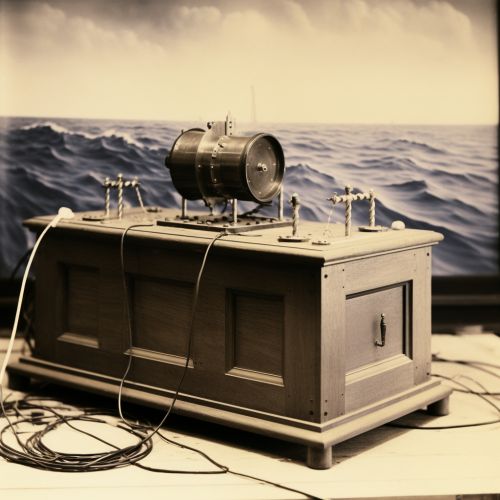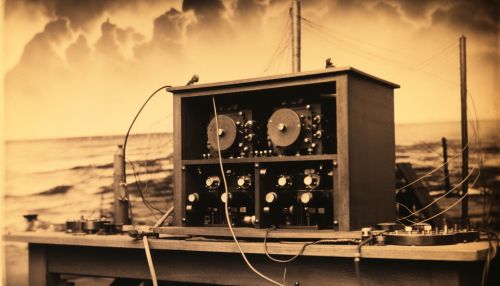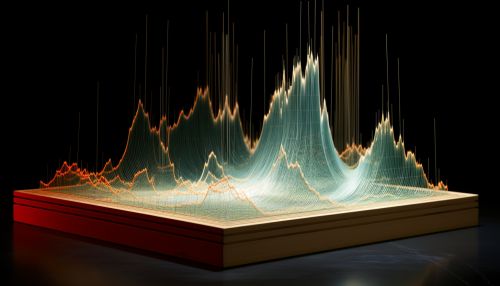The Science of Seismic Waves and Their Interpretation
Introduction
Seismic waves, the energy waves that travel through the Earth's layers, are a fundamental aspect of the field of seismology. These waves are generated by earthquakes, volcanic eruptions, and other seismic activities. They provide valuable data about the Earth's interior structure and the processes that occur within it. This article delves into the science of seismic waves and their interpretation, providing a comprehensive and detailed exploration of the topic.


Types of Seismic Waves
Seismic waves are categorized into two main types: body waves and surface waves. Each of these categories is further divided into different types of waves, each with unique characteristics and behaviors.
Body Waves
Body waves are seismic waves that travel through the interior of the Earth. They are the fastest seismic waves and can reach all parts of the Earth. Body waves are further divided into P-waves (Primary waves) and S-waves (Secondary waves).
P-Waves
P-waves, or primary waves, are the fastest type of seismic wave. They are the first to be detected by seismographs. P-waves are compressional waves that cause particles in the Earth to move in the same direction as the wave.


S-Waves
S-waves, or secondary waves, are slower than P-waves and arrive at seismographs after the P-waves. S-waves are shear waves that cause particles to move perpendicular to the direction of the wave.


Surface Waves
Surface waves are seismic waves that travel along the Earth's surface. They are slower than body waves but cause more damage due to their larger amplitudes. Surface waves are further divided into Love waves and Rayleigh waves.
Love Waves
Love waves are surface waves that cause horizontal shearing of the ground. They are the fastest type of surface wave.


Rayleigh Waves
Rayleigh waves are surface waves that cause both vertical and horizontal ground movement. They are slower than Love waves but cause more damage.


Seismic Wave Propagation
The propagation of seismic waves is influenced by the physical properties of the Earth's interior. These properties include density, elasticity, and the state of stress within the Earth. The speed and direction of seismic waves can change as they encounter different layers within the Earth.


Seismic Wave Interpretation
The interpretation of seismic waves involves analyzing the data collected by seismographs to infer information about the Earth's interior and the source of the seismic activity. This process involves several steps, including data processing, wave identification, and source localization.
Data Processing
The first step in seismic wave interpretation is data processing. This involves cleaning the data, removing noise, and converting the raw data into a format that can be analyzed.
Wave Identification
The next step is wave identification. This involves identifying the different types of seismic waves recorded by the seismographs. The arrival times of the P-waves and S-waves are particularly important, as they can be used to calculate the distance to the earthquake.
Source Localization
The final step is source localization. This involves determining the location of the seismic event that generated the waves. This is typically done by triangulating the data from multiple seismograph stations.


Applications of Seismic Wave Interpretation
The interpretation of seismic waves has many applications in various fields, including earthquake prediction, oil and gas exploration, and the study of the Earth's interior structure.
Earthquake Prediction
Seismic wave interpretation plays a crucial role in earthquake prediction. By analyzing seismic wave data, seismologists can identify patterns that may indicate an impending earthquake.
Oil and Gas Exploration
In the oil and gas industry, seismic wave interpretation is used to locate hydrocarbon deposits. This is done by creating seismic waves using controlled explosions or vibrating machines, and then analyzing the waves that are reflected back to the surface.
Study of the Earth's Interior
Seismic wave interpretation also provides valuable information about the Earth's interior. By analyzing the speed and direction of seismic waves, seismologists can infer the properties of the Earth's layers.


Conclusion
The science of seismic waves and their interpretation is a complex and fascinating field that provides valuable insights into the Earth's interior and the processes that occur within it. By studying seismic waves, scientists can predict earthquakes, locate oil and gas deposits, and learn more about the Earth's structure.
